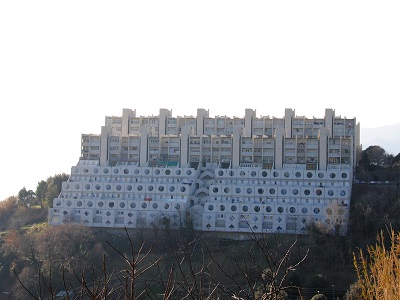Less than three years ago, the so called “Lavatrici” district in Genoa (literally, “washing machines” in Italian) was in poor shape: infiltration, heat dispersion, energy waste. The residents longed for an intervention. Then came a European project, aimed at developing and demonstrating replicable strategies for designing, constructing and managing large-scale district renovation programmes to achieve nearly zero energy cities. Its aim was to achieve 50% energy savings there.
The bulk of the work has now been done and, according to the first data, recorded between 1 and 10 November 2017 and presented during the last edition of the Genoa Smart Week, the target has been met: energy savings are 53%, with bills down by an average of around 30 euros per day.
San Pietro di Prà, this is the real name of “Lavatrici”, is one of the three demo sites involved in the project, called R2Cities, together with the Yakacik district of Kartal (a municipality in Istanbul, Turkey) and the Cuatro de Marzo district in Valladolid, Spain. The complex consists of 688 apartments, 438 of which are council houses owned by the city. The intervention involved 162 of those. The budget available was two million euros, half of which came from the EU and half from the Municipality of Genoa.
“It has been a good opportunity for bringing energy efficiency to an area where conditions were quite bad," states Stefano Trucco, from the Municipality’s smart city office. According to a first survey carried out by Rina Consulting, which collaborates with the project, 89% of tenants are satisfied with the project, and 82% have experienced improvements: a more comfortable temperature and efficient sound insulation, and better air quality.

Sergio Pandolfini, from the San Pietro district committee, says that “in the past, during the winter, we barely managed to reach 17 degrees. For families, heating was the biggest expense, a waste of energy and money. So we decided to intervene by replacing the old windows with fixtures that would ensure a better seal, by installing new boilers, and thermostats that allow each tenant to choose the temperature autonomously. The works also include sensors to detect wastefulness and malfunctions, and small photovoltaic system has been installed”.
"In the beginning many people were hesitant," Pandolfini remembers. “They were afraid of work-related discomfort, but above all, they lacked trust in the public administration. We organised meetings to inform and make people aware of the benefits that would come,” he adds.
Corrado Conti, an engineer at Genoa Municipality who has followed the project closely tells youris.com: “Involving citizens and gaining their trust was paramount. We were lucky enough to have a neighbourhood committee that was immediately ready to cooperate. I thank them all, because you can have the best intentions and the best technology, but they won’t do much good without a direct relationship with people.”
“A few interventions need to be carried before ending the renovation: the connection of the photovoltaic system and the remote control of the thermostats, which will allow distance intervention in the event of anomalies.”
Both the district committee and the municipality hope that the renovation works will spread. Many people living in apartments which were not involved in the project are calling for the same conditions today. From the technical point of view, there would be no obstacles. “All European projects are designed to be replicable,” says Trucco. Conti confirms: "We could start with the nearest buildings, extending the intervention from the 162 existing apartments to the entire district. But, of course, new funds will be needed."
"If we only consider the city of Genoa, there are at least six or seven areas where this kind of project would be useful and feasible. Such technologies could be offered on a larger scale to dwellers who have similar problems, and in many other cities", Trucco concludes.
By Paolo Fiore
4 December 2017